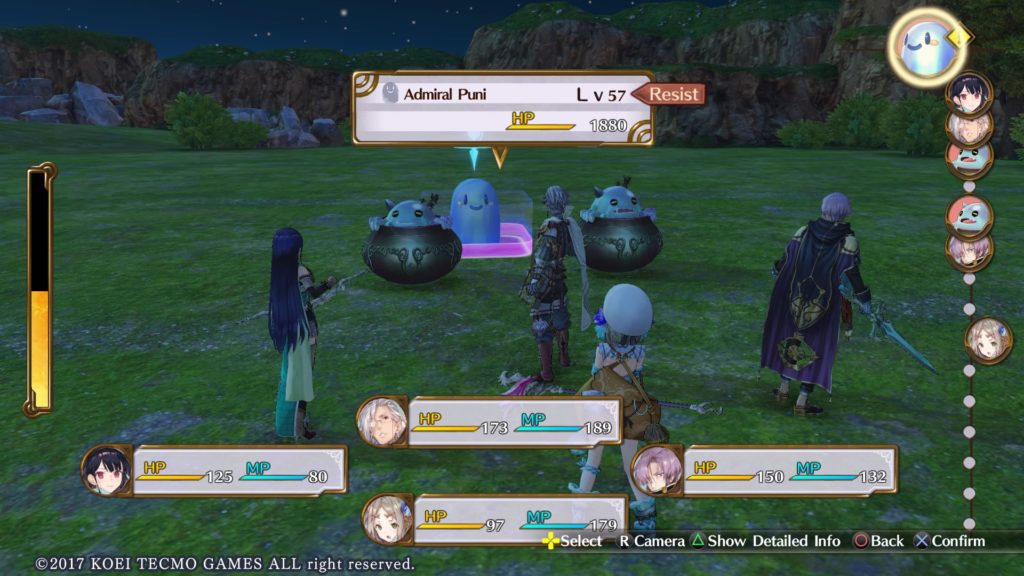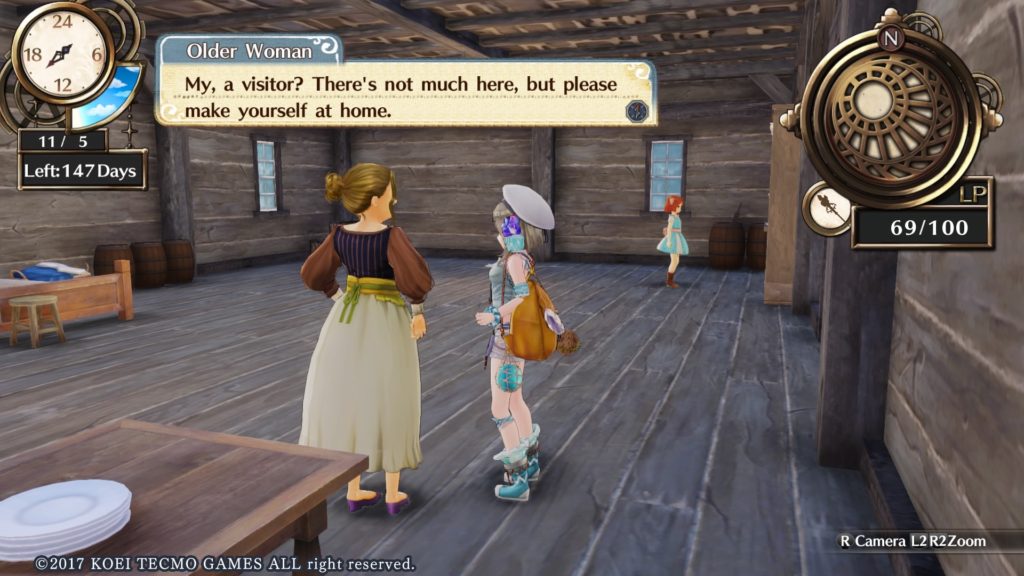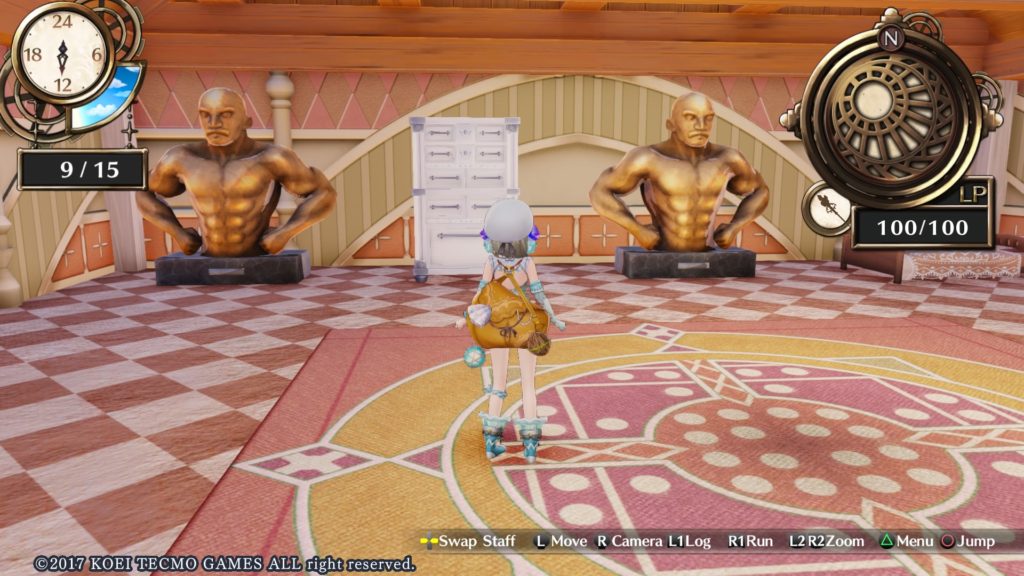
Firis Mistlud has spent her entire life in the underground city of Ertona. She longs to travel the world with her sister Liane, but her parents are reluctant to let her go. But when Firis learns alchemy from one Sophie Neuenmuller, an opportunity opens up. If Firis can pass an exam and become a licensed alchemist within a year, she will be allowed to travel around outside as much as she wants.
Even though I haven’t posted an Atelier series review on here since the Iris and Mana Khemia days, I’ve still been following the games over the years. Obviously a lot has changed in that time – Gust were absorbed into Koei Tecmo, and Atelier games started being pumped out at the rate of one a year. With that in mind, it’s no surprise that the series has suffered.
In lieu of full reviews, let’s quickly recap the intervening years. The Arland trilogy was great fun, and showcased everything about what classic Atelier titles aspired to be. Atelier Ayesha switched up the art style, but was still a great game. Escha and Logy was a lot easier than its predecessors, but still fun once you got into it. Even Shallie and Sophie, though not up to the level of the previous games, were solid titles with a reasonable amount of play value.
Then came Atelier Firis. It’s a different kind of beast, an experimental look at what could be achieved if an Atelier game were to be set in a more open world environment. On the one hand, I admire the devs for trying something a bit different. On the other, the rushed nature of this release means that there’s a lot that just doesn’t quite work.
In the classic Atelier setup, the protagonist lives and synthesises in their hometown, heading out to gather via an overworld. Atelier Firis throws out that formula and replaces it with a vast, connected world – not a true open world, but the kind of large gated areas of the type seen in FFXIV, Xenoblade, Tales of Berseria, and so forth. When you need to rest or synthesise in your atelier, there’s no need to return home – instead you simply set up your portable atelier at the nearest campfire.
At first, this sounds great – what a fantastic new way to explore a world and learn alchemy. Unfortunately, there are many reasons why it doesn’t quite work.
Players of older Atelier games will recall that there used to be time limits for achieving your goals, a feature that was absent in both Shallie and Sophie. In Firis, the time limit is back – you have one year to gather letters of recommendation and pass your alchemy exam. Only then can you spend as much time as you want exploring the world and synthesising high level items.
Now, in principle I’m not opposed to time limits in Atelier games – they worked well enough in the past, and added a level of challenge that’s been lacking in more recent titles. In fact, once you’ve played through mo Firis once, you’ll learn that the time limit is very generous. You need three letters of recommendation from licensed alchemists to take the exam, but it’s actually possible to obtain a maximum of five. I was able to get all five with well over a hundred days to spare, and even after faffing around exploring and fighting after that, I still ended up at the exam registration with around seventy days on the clock. However, even though it turned out to be no big deal in the end, the presence of that looming countdown clock really affected my enjoyment.
The time limits in earlier Atelier games were always broken down into smaller intervals. You knew that you had three years to achieve the main goal of the game, but in the meantime you had smaller, quarterly goals to work towards. You always had a good idea of what you were meant to be doing and how much time it was probably going to take.
Not so with Firis. After the prologue, you are essentially dumped outside your village with some vague instructions and 361 days on the clock. There’s a vast world to explore, but no real sense of whether you have the time to explore it thoroughly. And since you’re unlikely to want early mistakes to screw up the time you have left for the later, and presumably more difficult tasks, you just rush through as quickly as you can. It’s only when the pressure of the impending alchemy exam is removed that you feel more inclined to properly explore the world.
Synthesis
Atelier Firis’s vagueness also hurts the game when it comes to what is usually the most fun part of any Atelier title – the actual alchemy. As with Atelier Sophie, the recipe books of old are pretty much gone – instead Firis comes up with new recipes as she “does various things”, as the game describes it. In other words, as you synthesise items, fight monsters, and gather materials, these will occasionally trigger hints as to how to come up with a new recipe.
Unfortunately, there’s often no way to know whether you’re on the right track towards unlocking a recipe. Even with an all-encompassing Google Doc of recipes to hand, my attempts to fulfil the recipe unlock conditions didn’t always seem to work. And when some of those conditions are to synthesise a particular item 15-20 times, the entire process can easily become disheartening. Even the shortcut method offered by the game itself – to buy recipes idea points earnt through completing quests – doesn’t really help. You can’t buy a recipe until you’ve at least had the initial idea for it, and some can’t be purchased at all. By the end of the game, I was still wielding mid-tier weapons because I couldn’t get the recipes for the better metals to unlock, even with the aforementioned guide to hand.
Exploring the world

Since you can’t get an airship (and thus proper fast travel) until after the alchemy exam, a lot of the first half of the game is spent trekking from one location to the next. Maybe you want to gather wood for a recipe – if you’re far from a place that reliably provides wood, then first you have to hike across the world to get there (there’s fast travel within maps, but not between them). Having arrived at your destination, you decide to get down to gathering. If you’re lucky, you’ll find what you need, and lots of it. Otherwise, you’ll end up filling your basket with the limited selection of item types available on this vast map. Yes, there’s more room to gather and explore, but the variety of these larger maps seems to be about the same as the more compact locations of other Atelier games.

As with all Atelier games, gathering materials and completing quests sometimes requires you to get into battle. Apart from the more combat-focussed PS2 entries in the series, battle systems have never been the strong point of the Atelier series. The usual fare is a pretty basic JRPG battle system, with the addition of overpowered alchemical items. Atelier Firis doesn’t stray far from this path – there are a few changes from what we had in Sophie, but overall battle is more a chore than it is a pleasure. In fact, given the expansive of the world, you can largely avoid battle if you wish, at least until you want to start completing individual character storylines. At that point, I was predictably underlevelled, and ultimately ended up grinding for EXP by repeatedly facing down the same Level 40 dragon.
Characters
Every Atelier title comes with its own cast of supporting characters, usually falling into predictable stereotypes. Even though they’re rarely deep, generally I’m quite favourably disposed towards each game’s cast. When it comes to Atelier Firis, however, it’s hard to care.
Every character you meet – even the playable ones – seems quite bland and one-note, even by the standards of a middle-of-the-road JRPG. As with many of the other titles in the series, each playable character has their own individual storyline that progresses as you spend time with them. In previous games, character-specific cutscenes felt organically intertwined into the main story. Here, not only are the character stories exceedingly flimsy, but they only trigger when you remember to chat to your party members in the atelier. As a result, the character storylines feel quite disconnected from the rest of the story. Getting all the character endings is pretty easy, but it does feel more like a box-ticking exercise than something you do because you actually want to find out more about your allies.
Audiovisual
The Atelier series is usually pretty reliable for pleasing character designs, but Firis is a bit of a low point here too. Many of the designs have a spark of potential, but just fall flat in the execution. Even Firis herself doesn’t have a particularly good default costume – personally I think she looks much better in her summery “Zealous Explorer” outfit.

Poor NPCs, stuck in this empty house.
The world design is solid overall, but not especially remarkable for a PS4 game. Here again there are some questionable design decisions, such as the overwhelming pastels inside your atelier. You can pick and choose what furniture to have in your atelier, but sadly you cannot do anything about the colour of the walls and floor.

Improve your atelier with some Hagel statues.
One place where this game really does redeem itself is in its music. Standout tracks include the epic stylings of the daytime Weist Plains theme, and the Undertale-esque melody of the Auroro Snowfield.
Final Thoughts
On one level, it’s somewhat admirable that Atelier Firis tries to do something a bit different. Unfortunately, the idea of a more open world Atelier game doesn’t seem to have been properly thought through. When you add that to the mediocrity of many of the gameplay elements, this game only just barely qualifies as fun.
